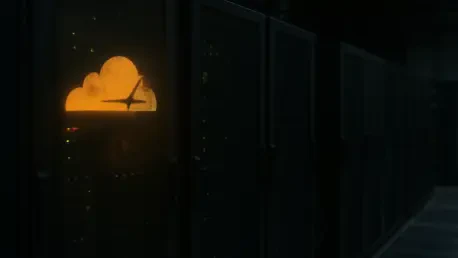Imagine a digital world where vast portions of the internet suddenly grind to a halt, leaving millions of users staring at error messages instead of their favorite websites or critical online tools, a scenario that became a stark reality during a recent major outage at Cloudflare. As a leading US-based company known for its content delivery network services, cybersecurity solutions, and DDoS mitigation, Cloudflare’s disruption sent shockwaves across the global online landscape, affecting countless platforms and exposing the fragility of the infrastructure that underpins much of modern digital life. As users struggled to access essential services, the incident highlighted just how dependent society has become on a handful of key players in the tech ecosystem. This event not only disrupted daily routines but also raised pressing questions about the resilience of internet systems and the measures needed to prevent such widespread failures.
Unpacking the Scale of the Disruption
Immediate Effects on Global Connectivity
The scale of the Cloudflare outage was staggering, as it impacted a significant portion of internet traffic worldwide, leaving users unable to load websites or access online services they rely on every day. Reports flooded in of error messages directly tied to Cloudflare’s internal service degradation, with many high-profile platforms experiencing technical difficulties that frustrated users across different regions. The cascading effect was evident as even tools designed to monitor internet disruptions faced challenges, underscoring the irony and severity of the situation. Businesses, content creators, and everyday individuals found their operations stalled, revealing how deeply integrated Cloudflare’s services are into the fabric of online activity. This incident painted a vivid picture of a digital ecosystem where a single point of failure can ripple outward, disrupting everything from e-commerce transactions to social interactions on a global scale, and prompting urgent discussions about dependency on centralized infrastructure.
User Experiences and Business Impacts
Beyond the technical glitches, the outage had tangible consequences for users and businesses, many of whom were caught off guard by the sudden loss of access to critical online tools. For small enterprises relying on web-based platforms for sales and customer engagement, the disruption translated into lost revenue and frustrated clients, while larger organizations scrambled to mitigate downtime that affected their operations. Individual users, meanwhile, expressed exasperation as they encountered persistent errors while trying to connect with friends, access entertainment, or complete routine tasks. The incident served as a stark reminder of how interconnected and vulnerable the digital economy remains, with even brief interruptions causing significant setbacks. It also spotlighted the need for contingency plans among businesses and raised awareness among users about the often-invisible systems that keep the internet running, pushing for greater transparency and preparedness in the face of such unexpected challenges.
Cloudflare’s Response and Broader Implications
Swift Actions to Mitigate the Crisis
In the wake of the outage, Cloudflare moved quickly to address the issue, acknowledging the disruption through updates on its System Status page and committing to a full resolution as soon as possible. The company identified a spike in unusual traffic as the trigger for the errors affecting its network, though the exact cause of this anomaly remained under investigation at the time. Despite partial recovery of some services, elevated error rates persisted for certain customers, and Cloudflare emphasized that its teams were working around the clock to restore normalcy. This proactive communication aimed to maintain trust with users and partners, reflecting a dedication to transparency during a critical moment. By sharing regular updates and promising a detailed post-mortem, the company sought to reassure stakeholders that every effort was being made to prevent future disruptions, highlighting the importance of accountability in managing such widespread technical failures.
Strategic Context and Industry Lessons
Amid the technical crisis, Cloudflare’s broader business trajectory provided an interesting backdrop, with the company having recently announced a strategic acquisition to enhance its AI capabilities. While unrelated to the outage, this move to integrate thousands of AI models into its platform showcased an ambition to remain at the forefront of innovation, even as it grappled with operational challenges. The contrast between forward-looking growth and the immediate setback of the outage underscored the dual pressures tech giants face in balancing expansion with reliability. More broadly, the incident reflected a recurring trend of infrastructure vulnerabilities within the industry, where sudden disruptions can expose systemic weaknesses. It prompted a reevaluation of capacity planning and cybersecurity measures, urging companies to invest in robust safeguards. As Cloudflare continued its investigation into the traffic spike, the event served as a catalyst for dialogue about strengthening the internet’s backbone to withstand unexpected pressures.
Reflecting on Systemic Vulnerabilities
Looking back, the Cloudflare outage stood as a sobering reminder of the internet’s inherent vulnerabilities, even for a company integral to its infrastructure. The widespread impact revealed how a single disruption could cascade across borders and sectors, affecting millions in unforeseen ways. Cloudflare’s response, while prompt, highlighted that even the most prepared entities could face challenges in containing such events. Moving forward, the industry was pushed to consider enhanced redundancy and proactive monitoring as essential steps to mitigate similar incidents. Businesses and users alike were encouraged to diversify their reliance on single providers and explore backup solutions to cushion against future outages. Ultimately, this event underscored the need for collaborative efforts to fortify digital systems, ensuring that the internet remains a resilient and reliable resource for all who depend on it, while sparking critical conversations about safeguarding connectivity in an increasingly digital world.









